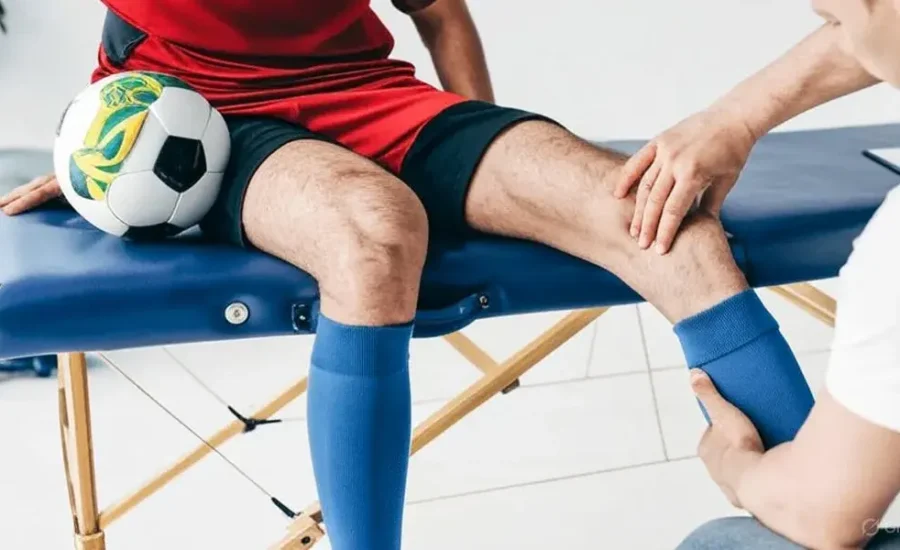Sports Injury Physical Therapy is a specialized branch of physical therapy that focuses on treating injuries related to athletic activities, restoring functional movement, and preventing future damage. Whether you’re a professional athlete, a weekend warrior, or a fitness enthusiast, sports injuries can significantly disrupt your performance and quality of life.
Injuries such as sprains, strains, tendonitis, fractures, and dislocations are common in sports. Sports Injury Physical Therapy is essential not just for healing but also for ensuring a safe and efficient return to sport. It emphasizes a comprehensive approach that includes pain management, strengthening, flexibility, neuromuscular retraining, and sport-specific rehabilitation.
Why Sports Injury Physical Therapy Matters
Sports injuries are not limited to professional athletes. Anyone who engages in physical activity is at risk, and without proper rehabilitation, these injuries can lead to chronic pain, weakness, or loss of mobility. Sports Injury Physical Therapy aims to:
-
Promote fast and safe recovery
-
Improve performance by correcting biomechanics
-
Reduce downtime from training or competition
-
Prevent re-injury through education and strengthening
-
Address both the physical and mental aspects of recovery
Common Sports Injuries Treated by Physical Therapy
Sports Injury Physical Therapy addresses a wide variety of injuries, including:
-
ACL tears and meniscus injuries (knee)
-
Rotator cuff injuries and labral tears (shoulder)
-
Hamstring and quadriceps strains
-
Ankle sprains and Achilles tendonitis
-
Shin splints and stress fractures
-
Tennis elbow and golfer’s elbow
-
Hip flexor strains
-
Groin pulls
-
Plantar fasciitis
-
Concussions and neck strain
Benefits of Sports Injury Physical Therapy (Bullet Points)
-
✅ Reduces pain and swelling without dependence on medications
-
✅ Accelerates tissue healing through targeted movement and modalities
-
✅ Restores full strength and mobility after injury
-
✅ Prepares the body for safe return to sport
-
✅ Corrects improper movement patterns
-
✅ Improves neuromuscular control and coordination
-
✅ Builds confidence and reduces fear of re-injury
The Process of Sports Injury Physical Therapy (Numbered Steps)
1. Assessment and Diagnosis
A physical therapist performs a detailed evaluation to understand the type, cause, and severity of the injury.
2. Pain Management and Acute Care
Modalities like ice, compression, elevation, electrical stimulation, and manual therapy are used to control inflammation.
3. Restoring Range of Motion
Gentle stretching and mobilization techniques help regain normal joint and soft tissue flexibility.
4. Strengthening and Conditioning
Personalized exercises are introduced to rebuild muscular strength, endurance, and balance.
5. Functional Training
Focus shifts to real-life and sport-specific movements such as jumping, pivoting, or sprinting.
6. Return-to-Sport Planning
Therapists guide patients through advanced drills and simulated gameplay to ensure readiness.
7. Injury Prevention Education
Athletes learn how to warm up properly, improve form, and recognize warning signs of overuse or imbalance.
Modalities Used in Sports Injury Physical Therapy
-
Manual therapy techniques
-
Cryotherapy and thermotherapy
-
Electrical stimulation (TENS, NMES)
-
Ultrasound and laser therapy
-
Kinesiology taping
-
Blood flow restriction training (BFR)
-
Aquatic therapy for low-impact movement
Sports Injury Rehabilitation by Type of Sport
-
🏀 Basketball: Focus on knee, ankle, and shoulder recovery
-
⚽ Soccer: Emphasis on ACL rehab, hip mobility, and endurance
-
🏈 Football: Strength and joint stability post-impact injuries
-
🎾 Tennis: Treatment for elbow, wrist, and shoulder overuse
-
🏃♂️ Running: Correction of gait issues, shin splints, and hip mechanics
-
🏋️ Weightlifting: Recovery from back, knee, and shoulder strain
-
🧘♀️ Yoga/Dance: Rehabilitation of hamstring, hip flexor, and foot injuries
Frequently Asked Questions (FAQs) About Sports Injury Physical Therapy
1. How soon should I start physical therapy after a sports injury?
Ideally, within the first 24–72 hours, especially for moderate to severe injuries. Early intervention leads to faster recovery.
2. Can I return to sports without physical therapy?
Returning too soon without rehab increases your risk of re-injury. Therapy ensures full recovery and readiness.
3. Will physical therapy hurt?
You might experience some discomfort, especially during stretching or strength work, but severe pain is not expected.
4. How long does rehab take?
Recovery depends on the type and severity of the injury, but most programs range from a few weeks to several months.
5. Can physical therapy improve athletic performance?
Yes! Many athletes use physical therapy proactively to improve strength, flexibility, balance, and injury resistance.
Tips for a Successful Recovery
-
🕐 Be consistent with appointments and home exercises
-
🍎 Fuel your body with proper nutrition for healing
-
💤 Prioritize sleep for recovery and performance
-
🧘♂️ Incorporate rest days and listen to your body
-
👟 Wear proper gear and footwear
-
🤝 Stay in communication with your therapist and coach
-
🎯 Set realistic goals and celebrate small milestones
Sports Injury Physical Therapy is more than just recovery—it’s about returning stronger, smarter, and safer. Through personalized treatment plans, sport-specific exercises, and expert guidance, athletes can overcome injuries and prevent future setbacks.
Whether you’re aiming for a professional comeback or just want to enjoy pain-free activity again, physical therapy is your essential partner in every stage of the journey. With the right care and commitment, you can bounce back—and go even further than before.

